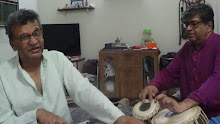Resume Writing tips for 2021
May 07, 2021
How Social Media is Killing Our Time?
May 07, 2021
Sexual Harassment of women
May 13, 2021
Categories
- animals and birds (1)
- arts (1)
- AUTOMOBILES (4)
- baba Ramdev (1)
- biography (2)
- books (4)
- Business (33)
- Carrier and Jobs (27)
- comparison (9)
- CORONA (6)
- crusades (1)
- cryptocurrency (4)
- digital marketing (9)
- education (4)
- ENTERTAINMENT (11)
- exercise and Yoga (10)
- Facts (5)
- fashion (1)
- Festivals (5)
- finance and investment (5)
- fine print (1)
- food and recipes (29)
- Games (2)
- General Knowledge (19)
- guest post (1)
- guitar (1)
- HEALTH AND FITNESS (48)
- hesitancy (1)
- Hindustan (1)
- history (5)
- holy war (1)
- how to earn (14)
- IMA (1)
- India (1)
- insurance (1)
- jehadi (1)
- jihad (1)
- Lic (1)
- life insurance (1)
- LIFESTYLE (76)
- medical (1)
- Motivation (35)
- music guru (1)
- nature (7)
- online tutorials (1)
- patanjali (1)
- piano (1)
- poetry (18)
- policy (1)
- politics (2)
- programming language (3)
- psychology and philosophy (5)
- Relationships (1)
- sanatan (1)
- Science and TECHNOLOGY (32)
- secular (1)
- share market (5)
- skills (25)
- social media (12)
- society (26)
- Sports (5)
- Stories (6)
- tabla (1)
- terrorism (1)
- tour and travels (20)
- tuition (1)
- universal (10)
- Vaccine (1)
- virus (1)
- vocal (1)
- worldwide (4)
- Writing (3)
HOW TO READ A BOOK: A DILEMMA
The Factual Cosmos
May 05, 2021
There is a crystal clear distinction between reading a book for knowledge, for fun, for peace of mind, or just to kill your time because boredom compels you to do so. But that problem is covered by the philosopher Mortimer J.Adler in his 1940 classic "How to read a book".In this book, Adler explains that what it takes to choose the book you want to and
grasp every aspect of it so that you can climb the ladder of understanding smoothly and efficiently.
This book was rewritten in 1972 with the collaboration between Adler and Charles Van Doren which gives the direction for effective and critical learning of books. The following article will enlighten you about the technicalities of this very book so that you can master the sophistication of book reading.
Dissection of "How to read a book":
There is no doubt in the fact that most of us know how to read but the question arises if we know how to read effectively, like if we would be able to crack everything that gets caught by our vision. We come to this kind of situation in our day to day life where we came across plenty of reading material for which we should ask ourselves if we are simply reading it to
get the information or we are aware enough to reach the point of understanding of that material we are reading.
Now let come back to Mortimer Alders book because as you all are already aware that he wrote on the subject of how to read a book and hence the title is " How to read a book".He divides the books into four layers which are known as levels of reading and they are as follows:
1.ELEMENTARY
2.INSPECTIONAL
3.ANALYTICAL
4.SYNTOPICAL
1.ELEMENTARY READING: As the name suggests it's a simple elementary school level thing like if you can read this article you are good to go.
2.INSPECTIONAL READING: This consists of two components, skimming and superficial reading. It helps us to get a general idea about the book and the author.
3.ANALYTICAL READING: It can be defined as deep learning. As in the words of Francis Bacon which he metaphorically said and I am quoting, "some books are to be tasted, some are to be swallowed, some are to be chewed and digested". So that quote in a way sums up the analytical reading.
4.SYNTOPICAL READING: Since it's in the extreme of the levels of reading, it's a tough nut to crack. It's also called comparative reading. It involves reading multiple materials at the same time and compare the ideas, vocabulary, theme etc. It helps you to develop a deeper understanding of the subject and develop an argument based on that.
A good reader needs to be aware and curious at the same time about what they are into. It's all about finding answers and filling the knowledge gaps which one should keep pushing while reading.
THANK YOU FOR READING!
Referenece:
_"How to Read a Book" by Mortimer J Adler
_Quote by Francis Bacon
Posted by The Factual Cosmos
Hi, This is Jitendra kumar Jain, graduated in English literature, politics and history. My hobbies are find New thing And represent it.You may like these posts
Random Post
3/random/post-list
Translate
Footer Menu Widget
Created By SoraTemplates | Distributed By Gooyaabi Templates



Social Plugin